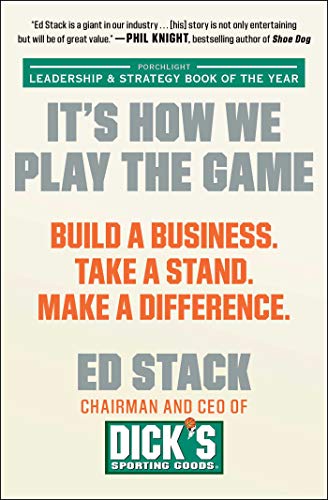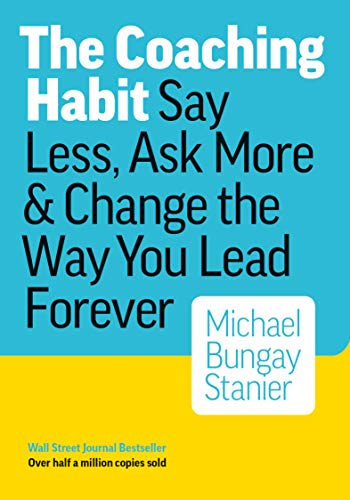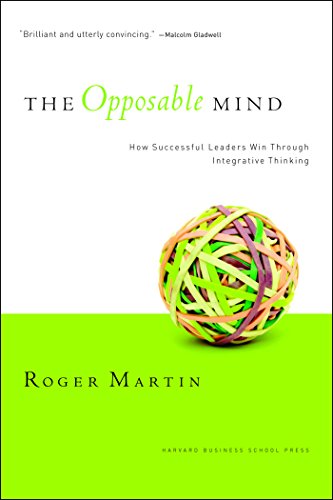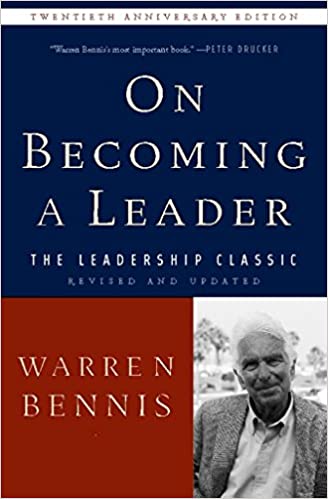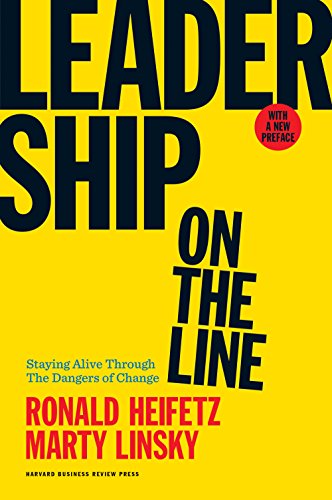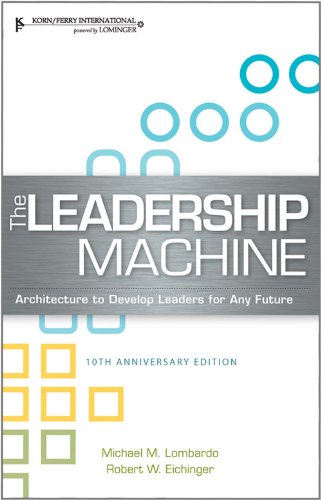Robert Bogue
November 2, 2020
No Comments
There’s an old I Love Lucy episode where Lucy and Edith are workers at a chocolate factory, and they can’t keep up, so they start eating the chocolates and stuffing them in their clothes. Laverne and Shirley are standing in front of an assembly line in the opening starting with a slow pace and ending with a rather overwhelming pace. The idea of an assembly line is neither foreign to me personally nor, I think, to most people. However, most people don’t think of talent development or leadership development as an assembly line. However, this is the perspective of The Leadership Machine.
It’s called a talent development pipeline, but that only thinly veils the perspective that you start young professionals in one end of the machine, and out the other end of the machine is supposed to pop out highly skilled and qualified leaders. There are so many problems and breakdowns in most organizations’ leadership machines. The Leadership Machine seeks to both address the common breakdowns and to lead you towards building your own leadership development pipeline.
One Size Fits All
If you’re a small or even medium-sized organization, you may think that you don’t have much of a machine for finding, developing, and retaining employees. You may believe that you have little capacity to build the kind of sustainable infrastructure that’s required to make the system work, and you may more importantly be concerned about how you manage the short-term demands on your business that may make an effort in such a long-term program pointless. Certainly, there’s truth to this when taken to the extreme. Smaller organizations cannot afford to spend tens or hundreds of thousands of dollars training people hoping they stay with the company after the investment has been made and the employee can contribute.
However, there is a way to leverage the learning from a big system and integrate the best parts into smaller organizations. It’s possible to use the work that has been done to identify and categorize key skills to refine your thinking about positions and what they need to be good at – even in organizations that aren’t that large.
Talent Development
It gets a bad rap. In many organizations, talent development inside an organization is seen as boring, ineffective training that is required. Too many talent development organizations are stuck delivering mandatory OSHA and sexual harassment training – and not enough of the kind of leadership development training that makes a real difference. (Hopefully, they’re delivering on anti-sexual harassment training, but that’s another story.) Because of this, most managers and leaders don’t even think to approach their talent development team with the kinds of skills building necessary to build tomorrow’s leaders of the organization.
This gulf between the tactical execution of mandatory training and the kinds of leadership development training that’s possible is something worth crossing for both the business and the talent development professional.
Seeking Skills Models
If you want to develop anything, you need to know what you’re shooting for. You need to know what’s important to the organization and, by extension, what isn’t. There are so many skills that can be trained, how do you focus your limited time and resources on the skills that are going to matter? Of course, there are some variations to every organization, but in truth, leadership is the same across organizations. The skills that make a leader good in one organization are likely going to make them good in another organization. That’s why Lombardo and Eichinger don’t recommend that you reinvent the wheel. They recommend a model called Leadership Architect® developed by the Center for Creative Leadership. A summary of the model (pulled from the book) follows:
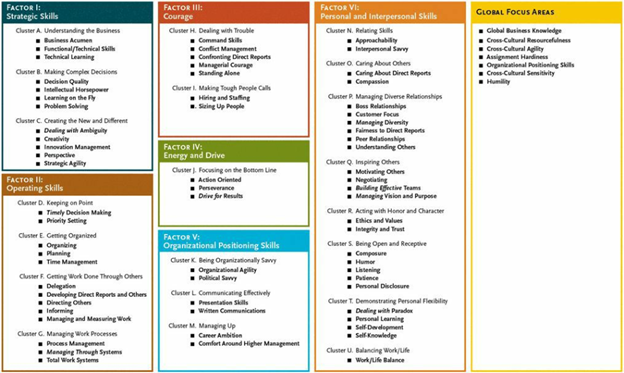
With a model for skills in place, it’s important to understand the number and types of skills needed both in general and specific to roles or levels in the organization.
Number of Skills
The answer, in terms of what skills should the ideal leader have, is always answered with “All of them;” however, as the outline implies, there are more skills than anyone can be reasonably expected to excel at – or even to be proficient at. Instead, the leader needs a basic toolkit, with deep skills in a few areas and no deficiencies in others that are barriers to their career advancement.
They break down skills into groupings:
- Price-of-Admission – These skills are necessary for and expected of everyone, so they won’t help differentiate candidates in the talent pipeline.
- Competitive Edge – These skills deliver differentiation between average performers and high performers.
- Competitive Edge by Level – These skills differ by level in the organization, with some skills being needed by managers but not by executives and vice versa.
- Competitive Edge for Superior Performance – These skills seem to only be found in superior performers at any level of the organization.
The answer to the number of competitive edge skills by level seems to be 5 skills for managers and 8 skills for executives, but the tricky part is that the skills aren’t all the same.
Better Hiring
One of the things you might expect from a book about how to develop a leadership machine (or a leadership pipeline); however, the view is more organic. The expectation is that there is so much competition for the best people that, if you want to develop a pipeline of leaders, you had better plan to do it yourself rather than hire it from the market.
Competitively, the best (read: most expensive) offers go to the candidates who show the highest GPAs – or at least meet some arbitrary GPA cutoff. There are not enough of these candidates to go around, and the demand has driven the cost up. A better investment, supported by research, is to build effective training programs that allow you to develop the leadership skills through your internal development process.
Effective training programs aren’t all in the classroom or online. Effective training programs are designed to nurture the candidates through challenging them appropriately. Nicholas Taleb in Antifragile explains how we need challenges and how the right challenges at the right intensity with the right recovery time make us stronger. The training programs we develop internally should progressively challenge candidates without overwhelming them or pushing them too hard – and that is very hard to do.
Returning to Defaults
Left to our own devices, we’ll fall back on a few of our core strengths – things that we learned during our journey into adulthood or soon after we entered the corporate world. These strengths are great until they’re misapplied or applied too much. When these core skills come out, it can be a sign that someone is under too much stress. The result of the application of these skills are problems rather than solutions, because even executing on skills that you’re good at when you’re supposed to be doing something else is a bad thing.
In our office, I have a real, full-sized stoplight. It’s just to the right of my desk and it’s a constant and visible reminder that just because I can do something (I have the skill or capability) doesn’t mean I should do it (it’s the right thing). “Can do” aren’t green lights, they’re yellow. If I’m exceptionally good at crafting introductory language and start to sink my teeth into it, it could mean that I’m addressing something that requires finesse for a high-profile client. Conversely, it might mean that I’m avoiding a difficult personnel discussion that I need to have – perhaps with the person who should be doing this work. When I’m doing something I can do – but shouldn’t – I’m depriving myself, my team, and my world of the more challenging or rare skills that I’m being asked to execute on.
The Secret of Success
It’s learning. It’s learning how to learn. It’s learning how to hunger for additional skills. When Stan Lee put the call out for people to become the next superhero in a comic and on the big screen, he got a lot of entries. People wanted to see their personal brand of superhero come to life. Most of the superhero ideas were duds, but one was just unique enough. The character Domino had the capability to influence luck. The degree to which this is played out in Deadpool 2 is ridiculous, even by superhero movie standards – but it represents an intriguing argument. What skill – like the ability to influence luck – would be more useful than anything else?
While none of us can influence luck, we can influence learning. The ability to learn and the world of information that we live in today means nothing is out of reach for someone ingrained with the metaskill of learning. It’s not quite as slick as downloading new skills into someone’s brain, like they did in The Matrix, but it is the ability to expand beyond the normal limits of humanity.
Learning is Risky Business
Everyone wants to know the secret of success, and here it is – be continuously learning. It’s simple. However, most people don’t do it. Why? Because learning is risky business. It means you must admit that you’re making mistakes and you’re vulnerable. It means you must admit that you don’t have all the answers, and in most business situations today, that’s risky.
Showing vulnerability is inherently risky, because the person you exposed the vulnerability to may choose to exploit it (or at least try). However, learning is risky for another, more profound reason. Learning allows you to change your world view, and in doing so may threaten everything that you believe. So, when it comes to the key to success, the answer is simple but not easy. It takes courage to stay focused on learning, even when it might hurt.
High Performer but not Highest
If you wanted to predict the best leaders in your organization ten years from now, who would you choose? Would you choose those with the absolute highest performance for the last quarter or the last year? Obviously, you want successful performers, but do you want the absolute top performers? Curiously, the answer is no. What you want are solid performers who are making long-term investments in their learning and development.
Richard Hackman, in Collaborative Intelligence, explains how he measures the effectiveness of teams on multiple levels, and short-term performance is the simplest but poorest predictor of long-term performance. The highest level is learning and growth. The same is true for individuals. If they’re focused only on short-term results, they’ll be a brighter star than their peers at the expense of their long-term performance.
Ideally, if you’re looking to find your highest potential future leaders, you’ll look for someone who has learned to balance short-term results with long-term development. If they can do this in themselves, they’ll likely be able to deliver this balance as a leader.
Agility
There has a been a greater focus on the idea of agility as the world seems to be changing more rapidly than ever before. Entire industries are under siege from startups with a new way of doing things. The venerable Kodak lost its hold on the photography market during the digital disruption of digital cameras that ironically, they helped to create. Taxi companies are struggling against Lyft and Uber. The automobile and energy industries have been confronted with the fact that electric cars are becoming a reality and both industries are trying to determine how they’ll cope.
Sometimes agility is couched on the language of innovation. If we just learn how to innovate, we’ll leapfrog the competition. This neglects the reality of Kodak’s situation. They demonstrated innovation in the introduction of digital cameras but were ultimately overcome by the reality of an organization too married to chemical photographic processes to fully adapt to the new electronic world.
Learners are agile because of their capacity to connect diverse ideas and to pull from different places to create new combinations of solutions that can be applied to their company and their industry.
Career Freedom Option Accounts
On the one hand, you’ll hear that you should do something that you love, and you’ll never have a day’s work in your life. On the other hand, you hear that you’ll have to pay your dues. You’ll have to keep your nose to the grindstone and work for years before you start to enjoy the fruits of your labor. How can both be true?
The answer lies in flow. Flow is the high-performance psychological state that balances challenge and skill that is itself rewarding. (See Flow, Finding Flow, and The Rise of Superman for more about flow.) In flow, you’re working hard, and you’re not really seeing the rewards in the tangible sense, but the intrinsic rewards are enough to keep you going. (See Why We Do What We Do for more on intrinsic rewards.) Still, this doesn’t mean if you can’t find flow and find the intrinsic rewards that you should immediately quit your job; you should first check your career freedom options.
The choices we make in terms of learning, persistence, and savings can help us drive up the balance in our career freedom accounts. The more skills be have (learning), the more results we can demonstrate (persistence), and the more resources (savings) we have, the greater the opportunities for us to safely quit our current career and start another career that may be more appealing for its intrinsic and extrinsic rewards.
Someone who is an accomplished carpenter and an accomplished plumber clearly has more options than someone who has only one or the other of these skills. When they decide they want to do something new or work for someone new, they can make the leap quickly and easily. Someone who fails to finish high school and has no specific skills is stuck working entry level jobs in manufacturing or service. They can’t afford (figuratively) to make a change, even if they don’t like their current situation.
Someone who didn’t finish high school, college, a trade school, or anything that grants a certificate of completion (which is what a diploma is) isn’t in a position to provide any marker of their value to a new perspective company or client. Without these markers of persistence, many organizations won’t give you a chance.
You’ve probably heard about the people who retire in their 40s. They’ve saved enough money that they don’t have to work any longer. The interest on their savings are enough to cover their modest needs, and as a result they’re not going to work. They’re going to spend their time doing what they want. At some level, we’re all trying to do this. We’re looking to acquire enough assets that we can make the absolute decision to walk away from working. Whether we call that retirement or FU money, the goal is to be able to have ultimate freedom in our careers including what we do and don’t do.
The War for Talent
While the market changes due to COVID-19 may make the war for talent a thing of the past for a time, the fundamental issue remains unchanged. The war for talent is framed in the perspective of not enough people. However, that framing is fundamentally flawed. It’s not that we don’t have enough people to do the work. The reality is that we don’t have enough skilled and persistent people to do the work.
The challenge isn’t one of absolute numbers but rather ratios of the number of people who are occupying the planet and the percentage of those that possess the skills that we need for the positions that we have created. Certainly, we need to try to create positions in ways that minimize the depth and diversity of skills required to increase the chances that we can find people to fit the role, but we must simultaneously find ways to encourage the development of skills. This includes not just access to the tools necessary to develop the skills but also the tools of motivation to create a desire for people to learn those skills.
People Development
The sad fact is that only 7% of managers are held accountable for the development of their people, according to a McKinsey study. In a world of management by objectives, dashboards to hit, and a continuing increase in the general pressure, developing the people under your care gets lost in the shuffle. (See Servant Leadership for more on the idea of the people you lead being under your care.) Because it’s not measured, it’s not happening.
In my personal world, I can tell you that I left my corporate job and started Thor Projects because I felt like I wasn’t receiving career development. My journey since then has been eclectic, but it’s been good. I know that I didn’t know what I was doing for my career development – and still don’t. It would have been good to have someone who has been through the challenges that I was and am facing, who could guide me through developing the skills that I need to be successful, but sadly that almost never happens in an organization.
Whether your organization is good about your development or not, you can take your own steps to become a leader by reading The Leadership Machine.
